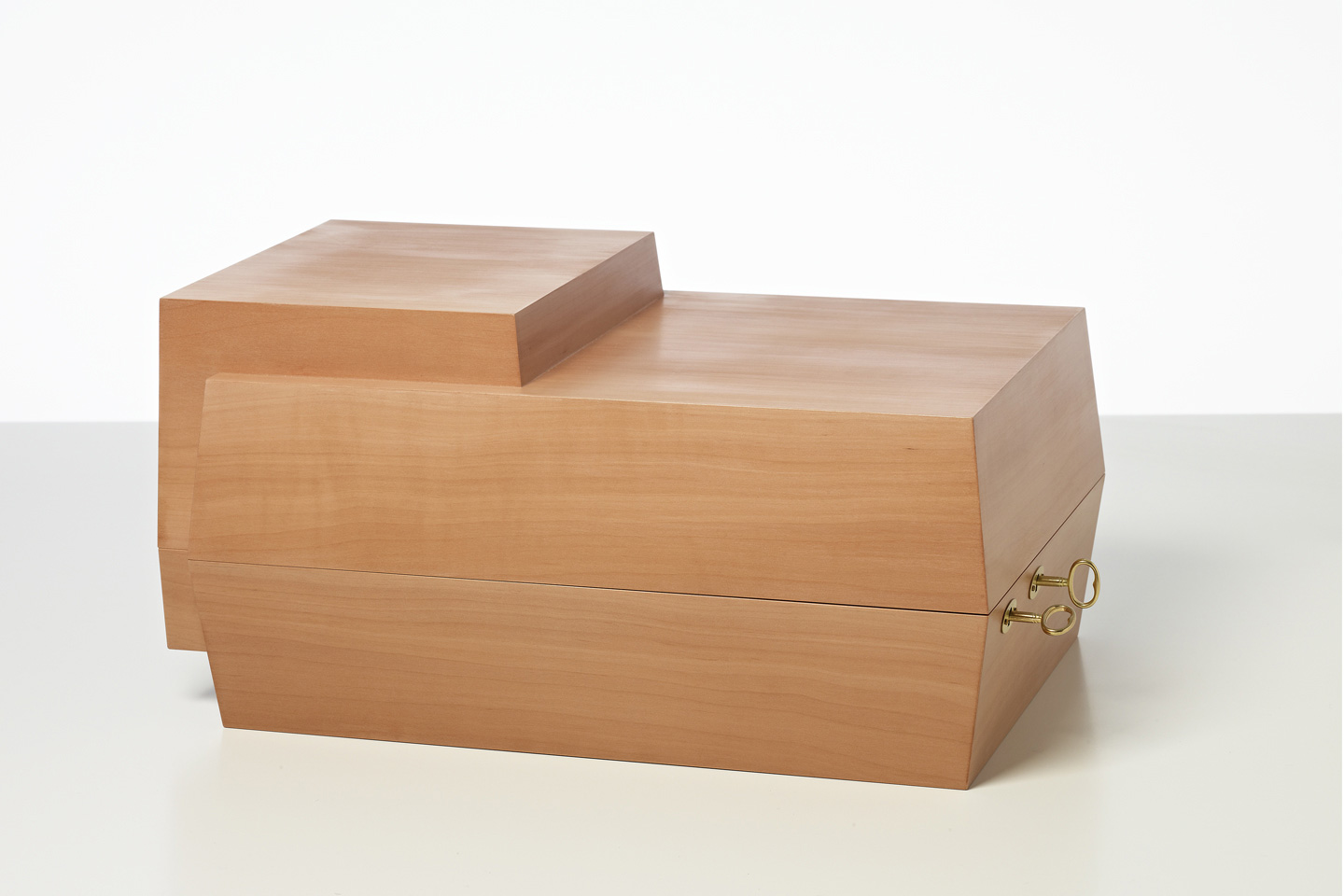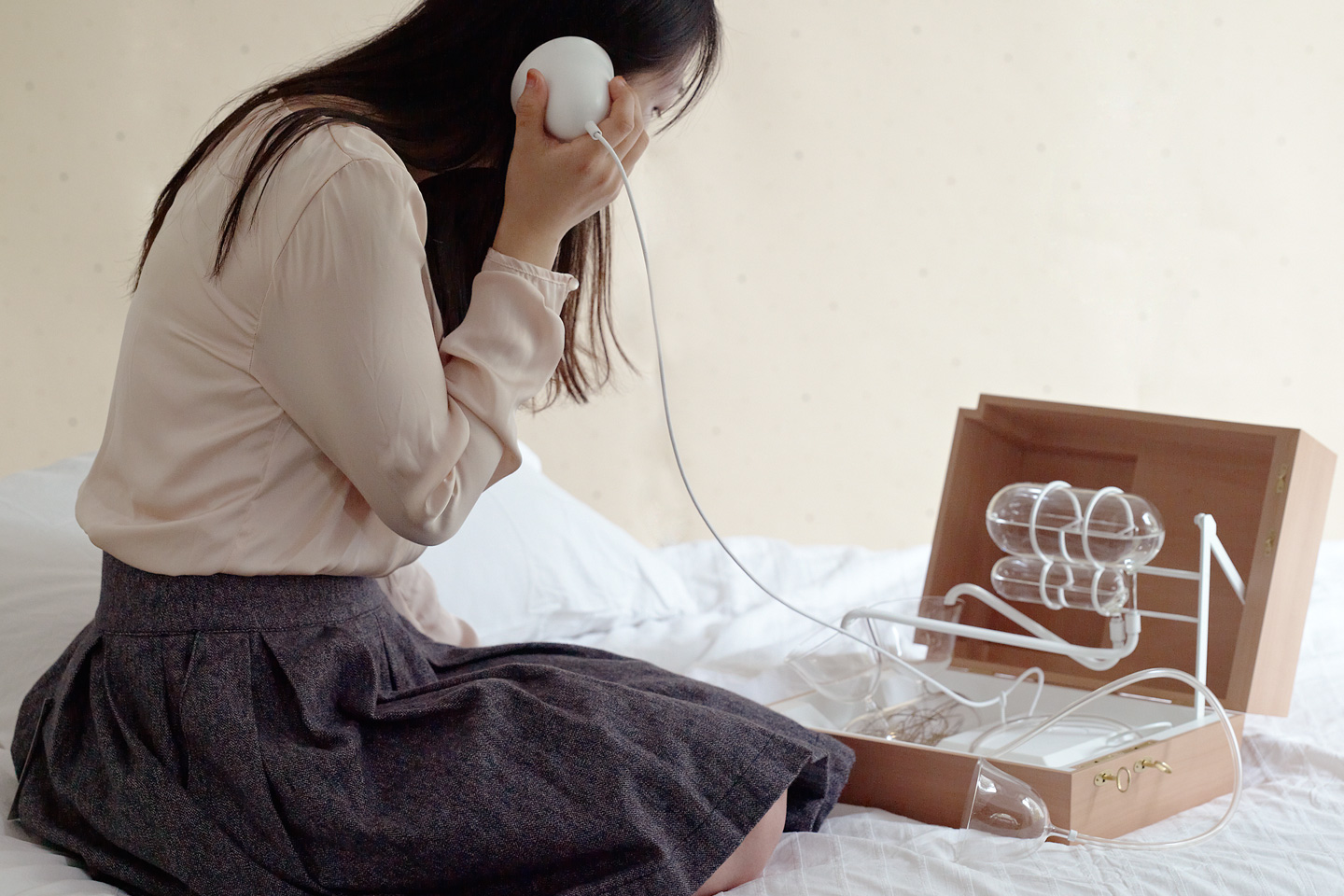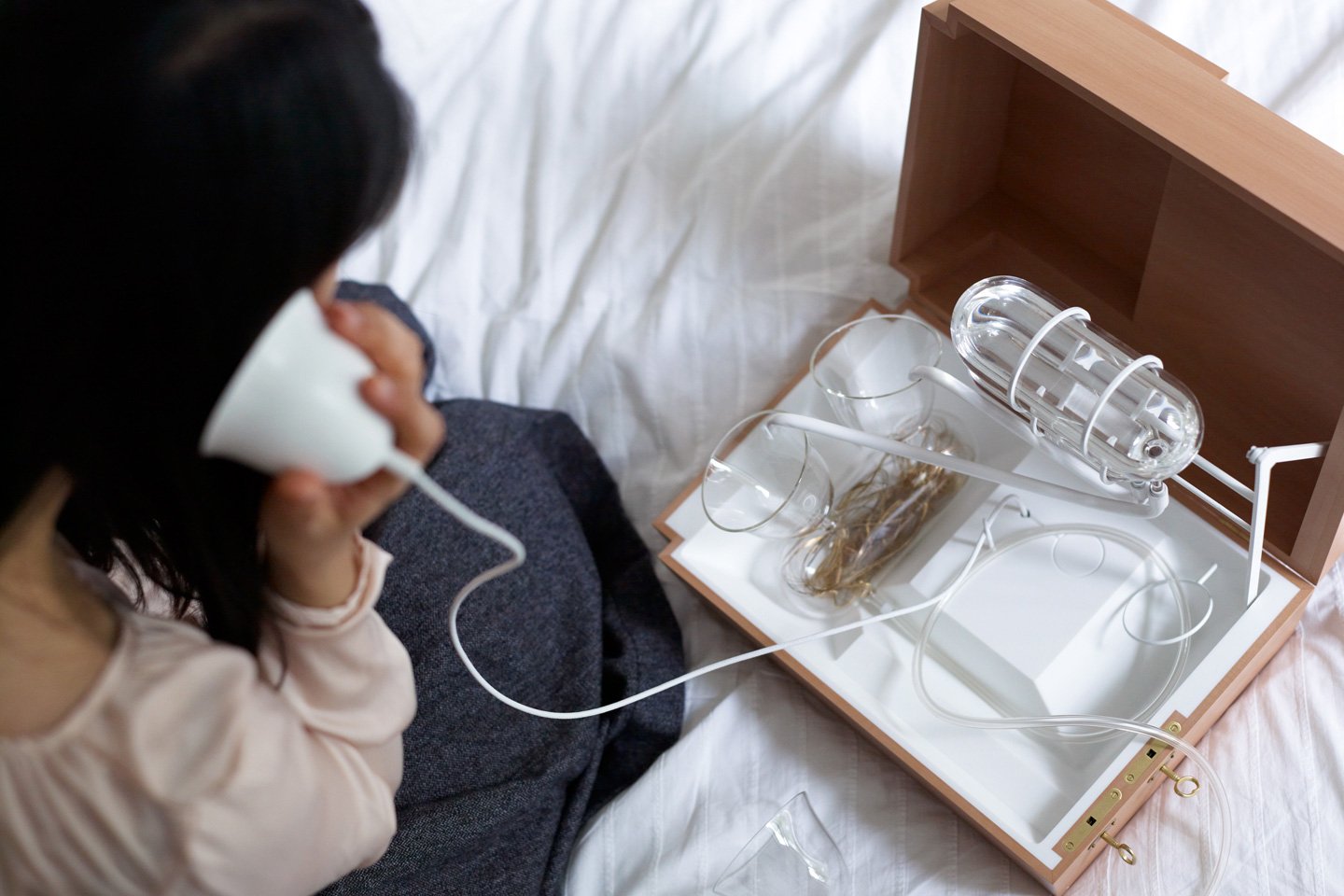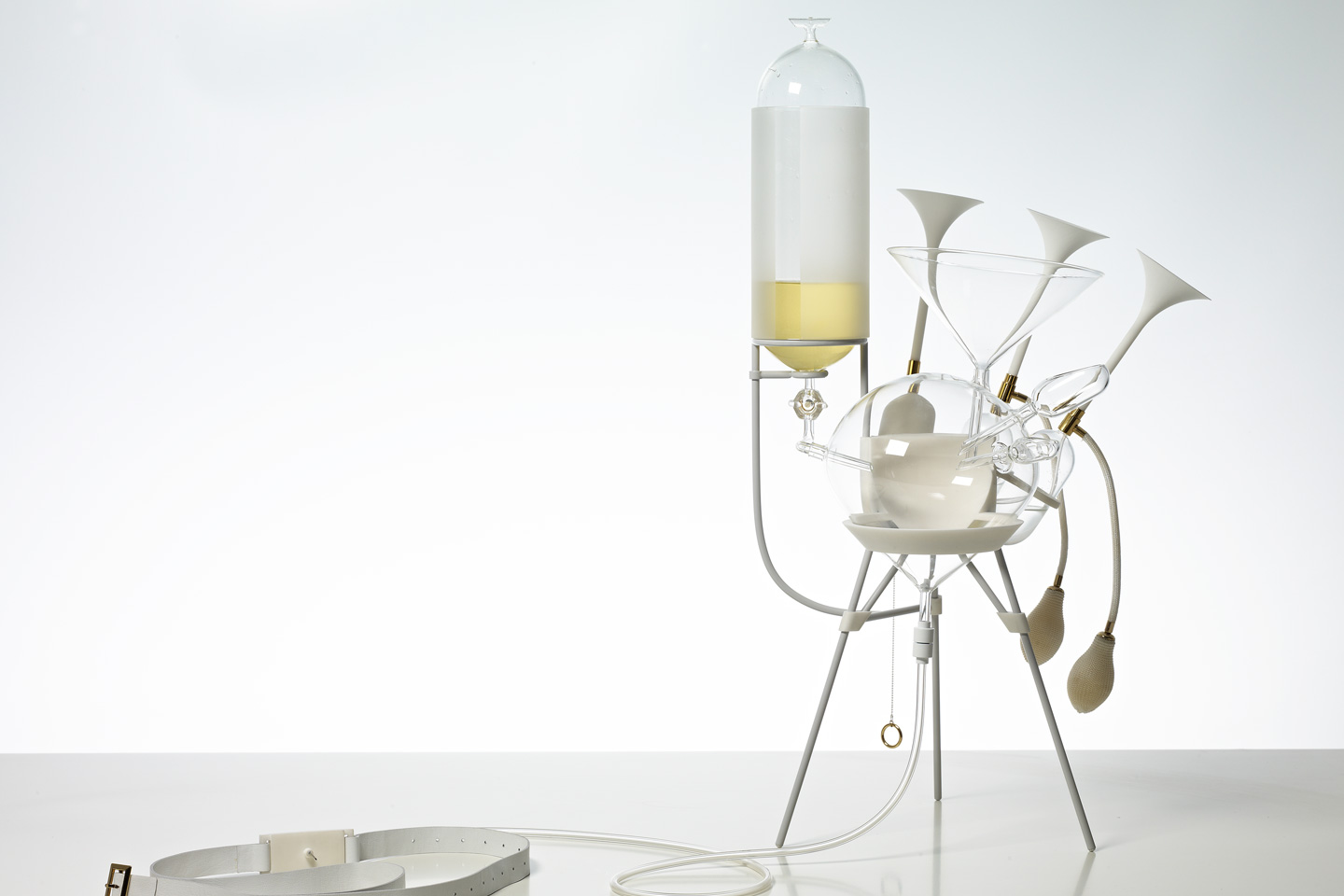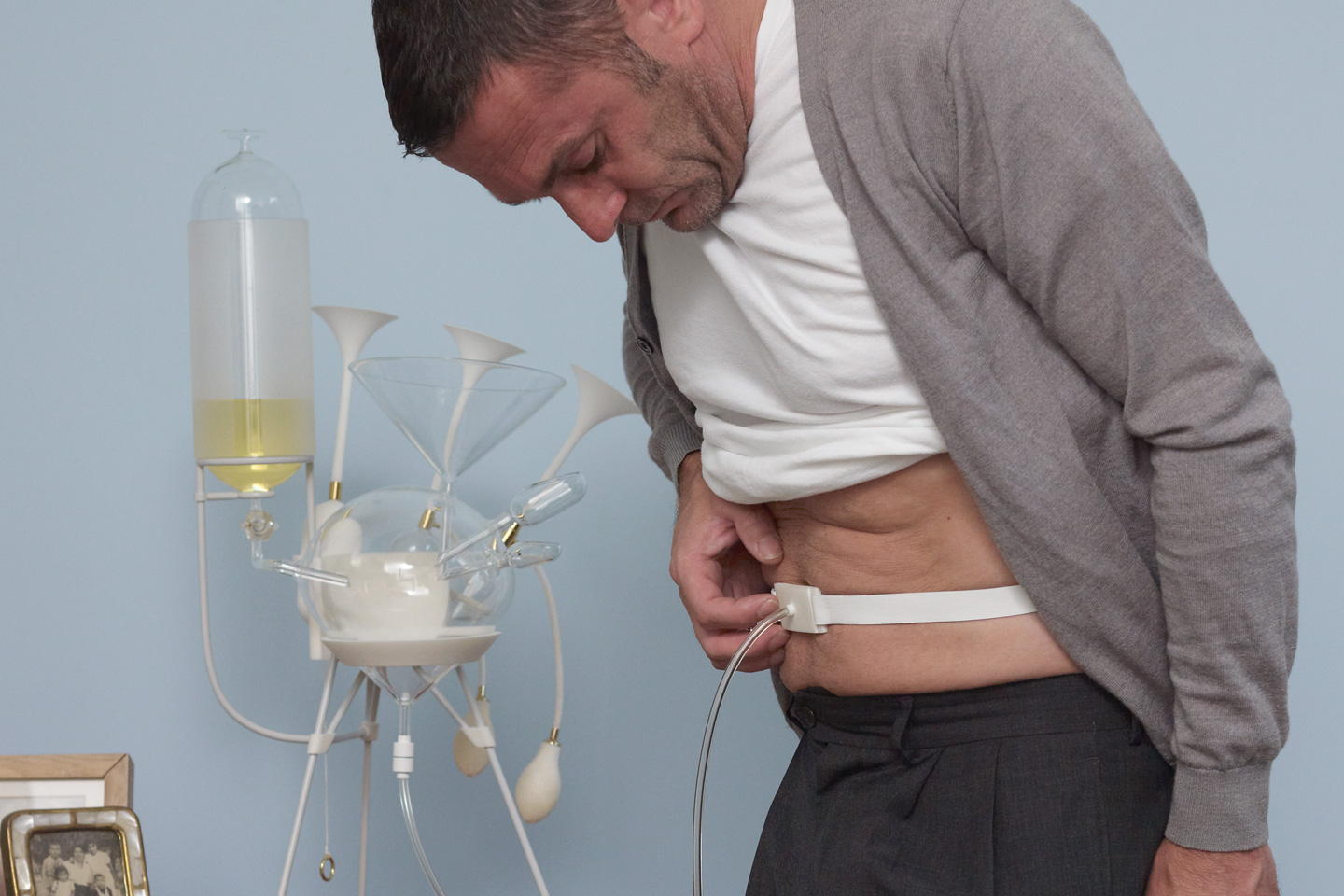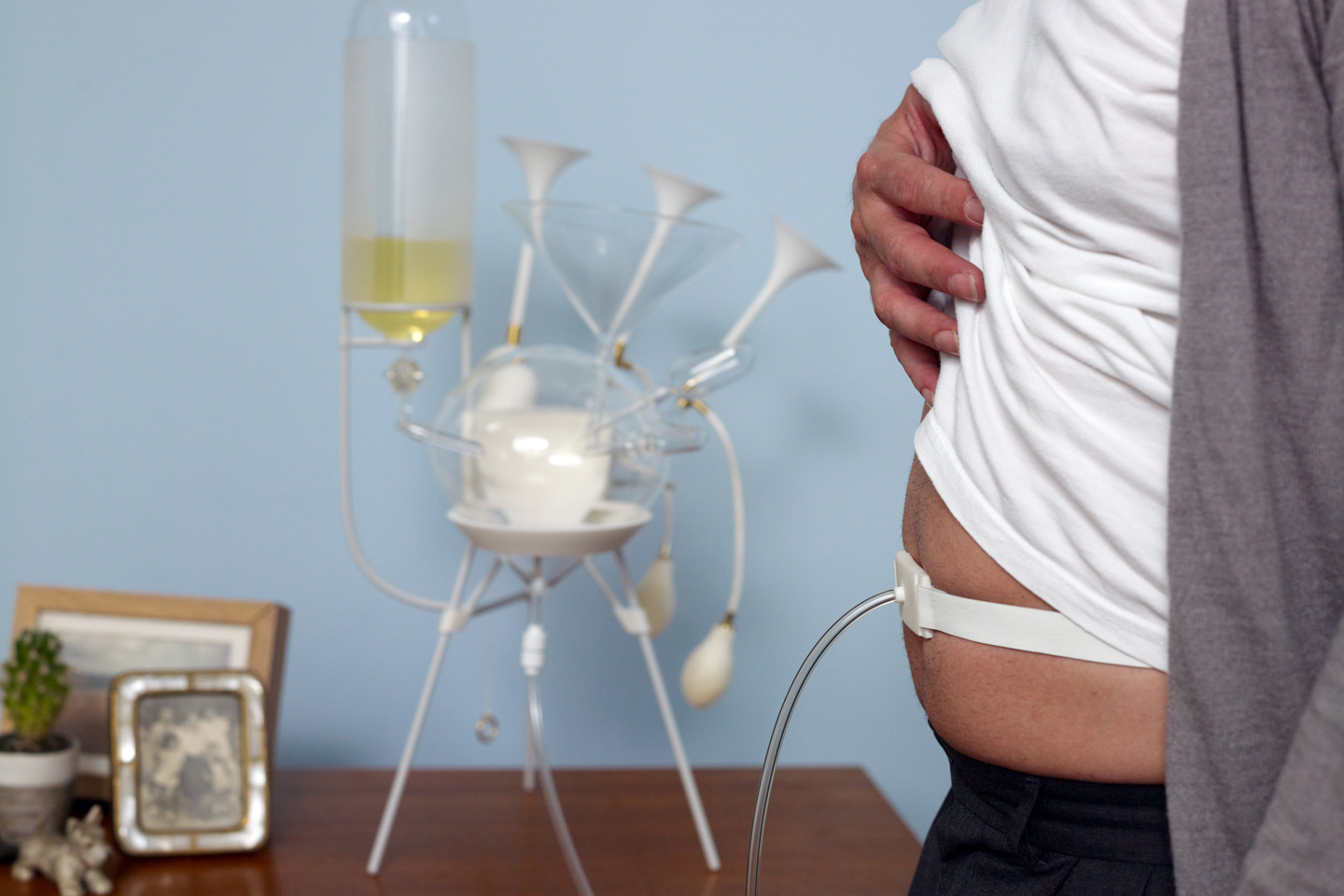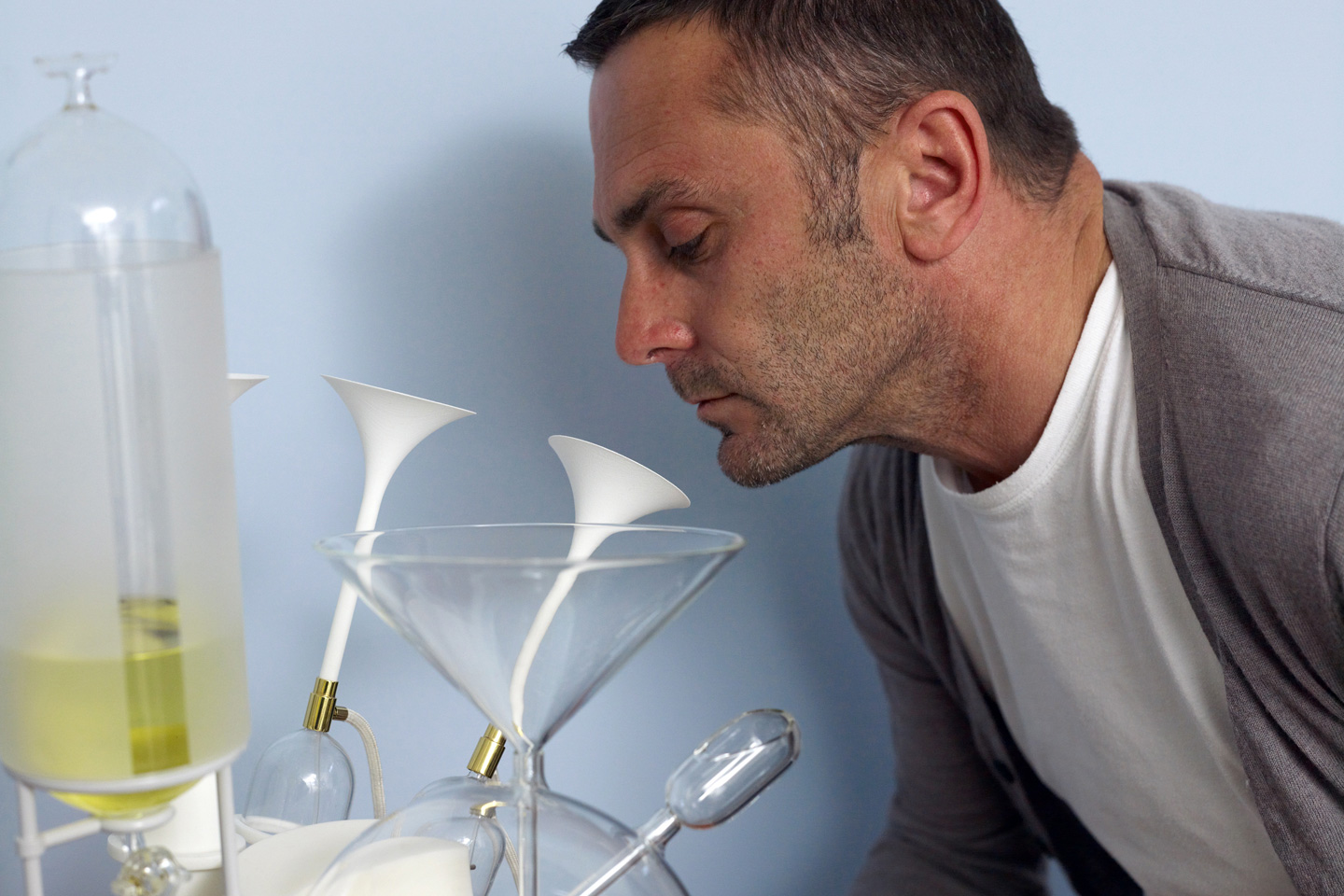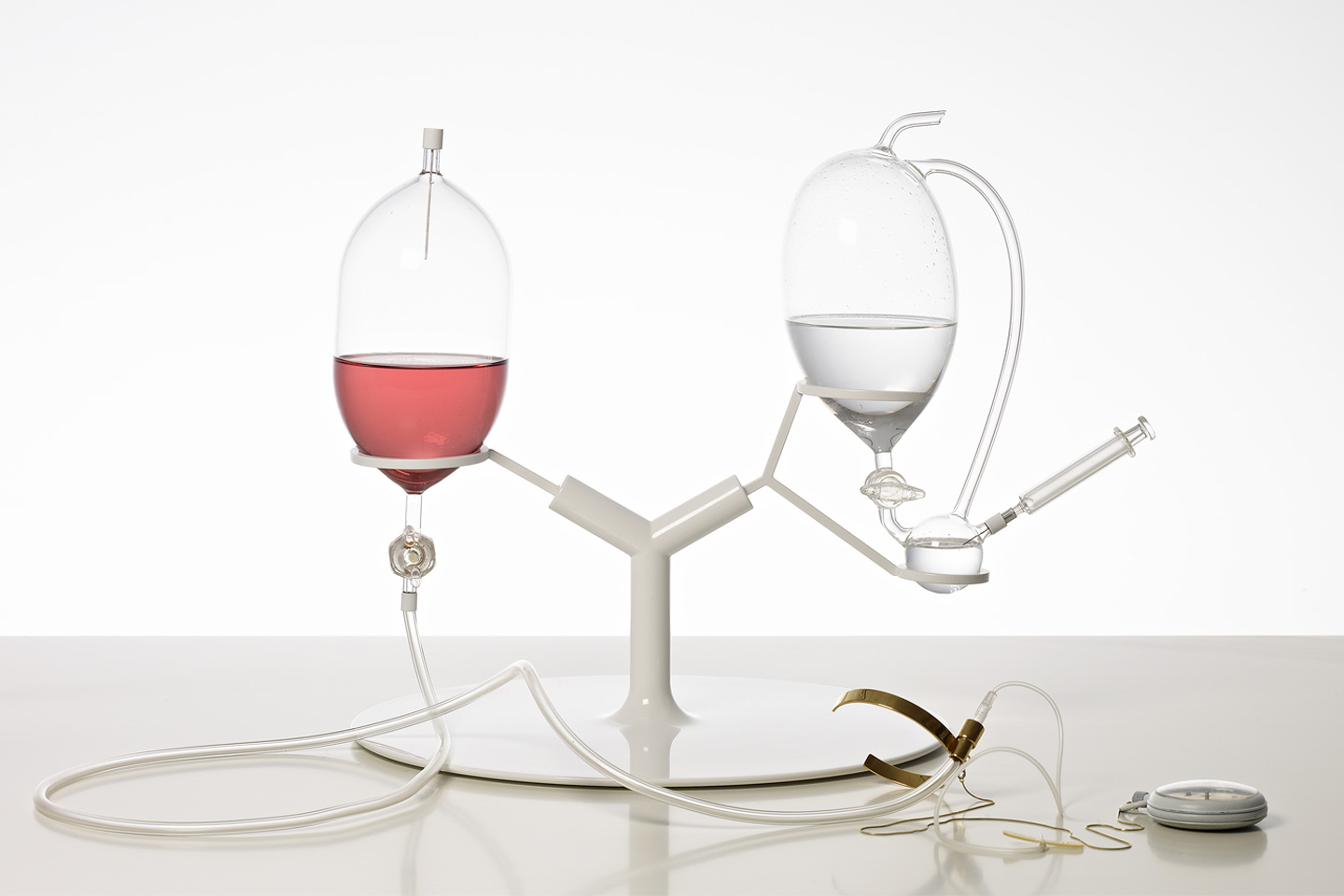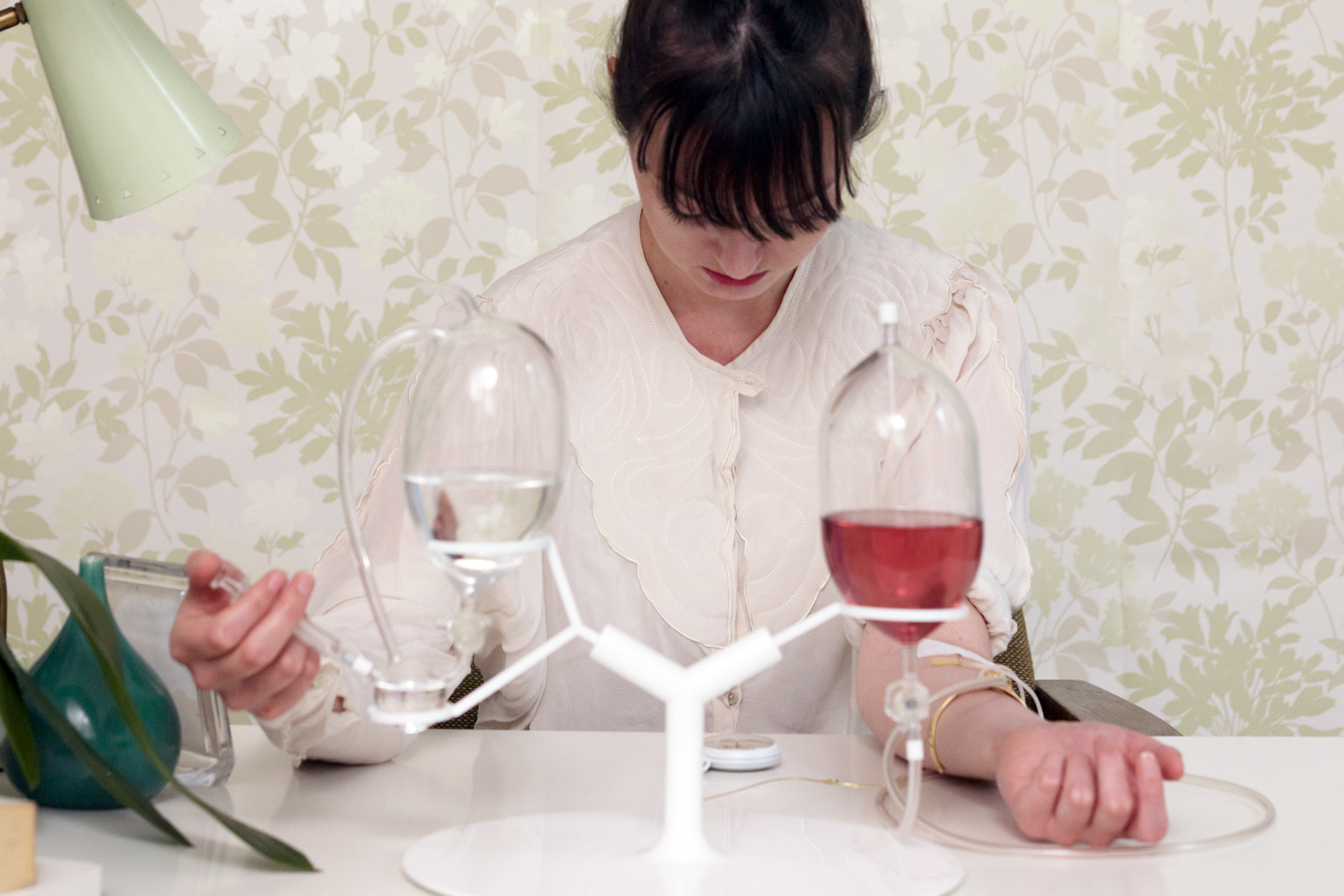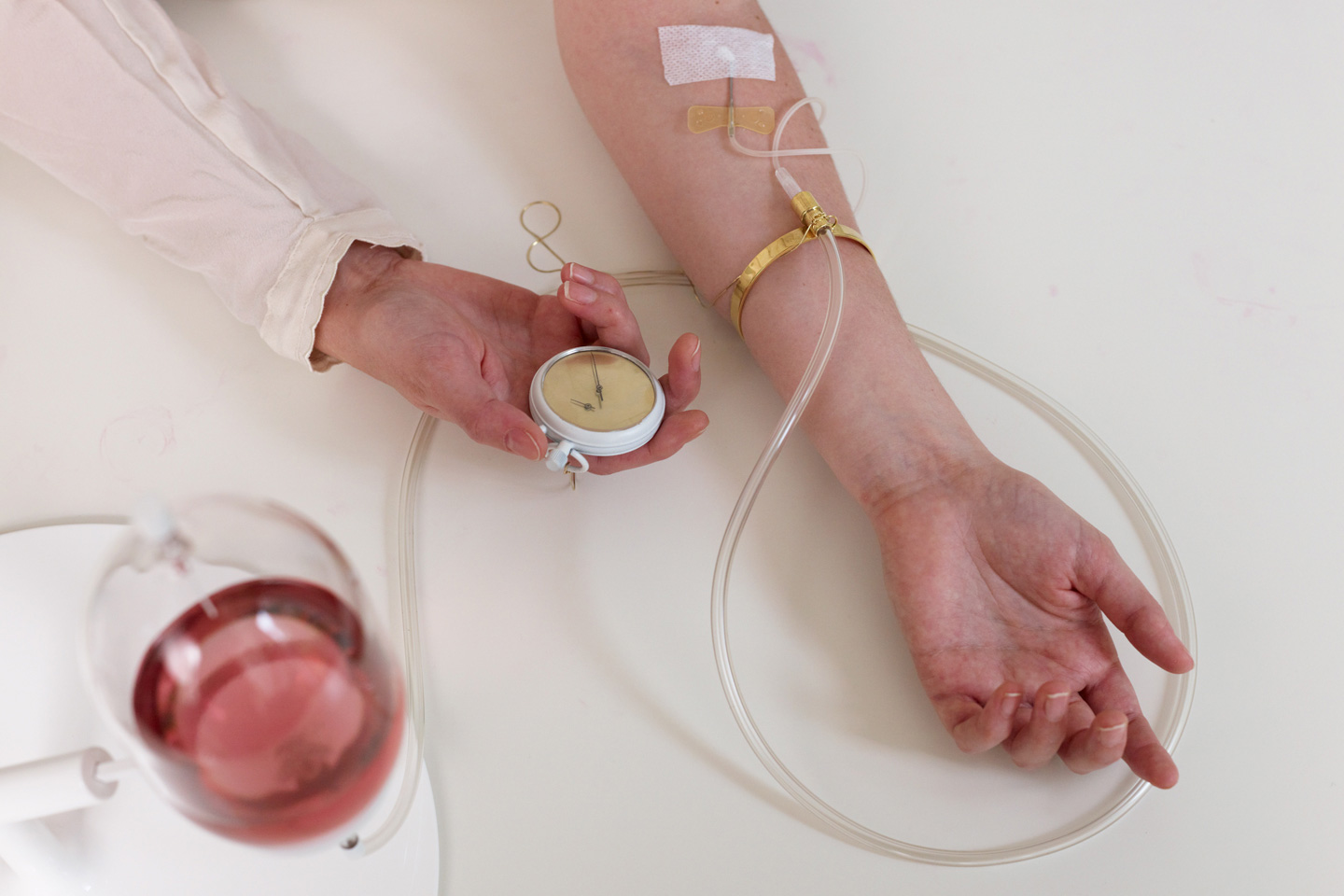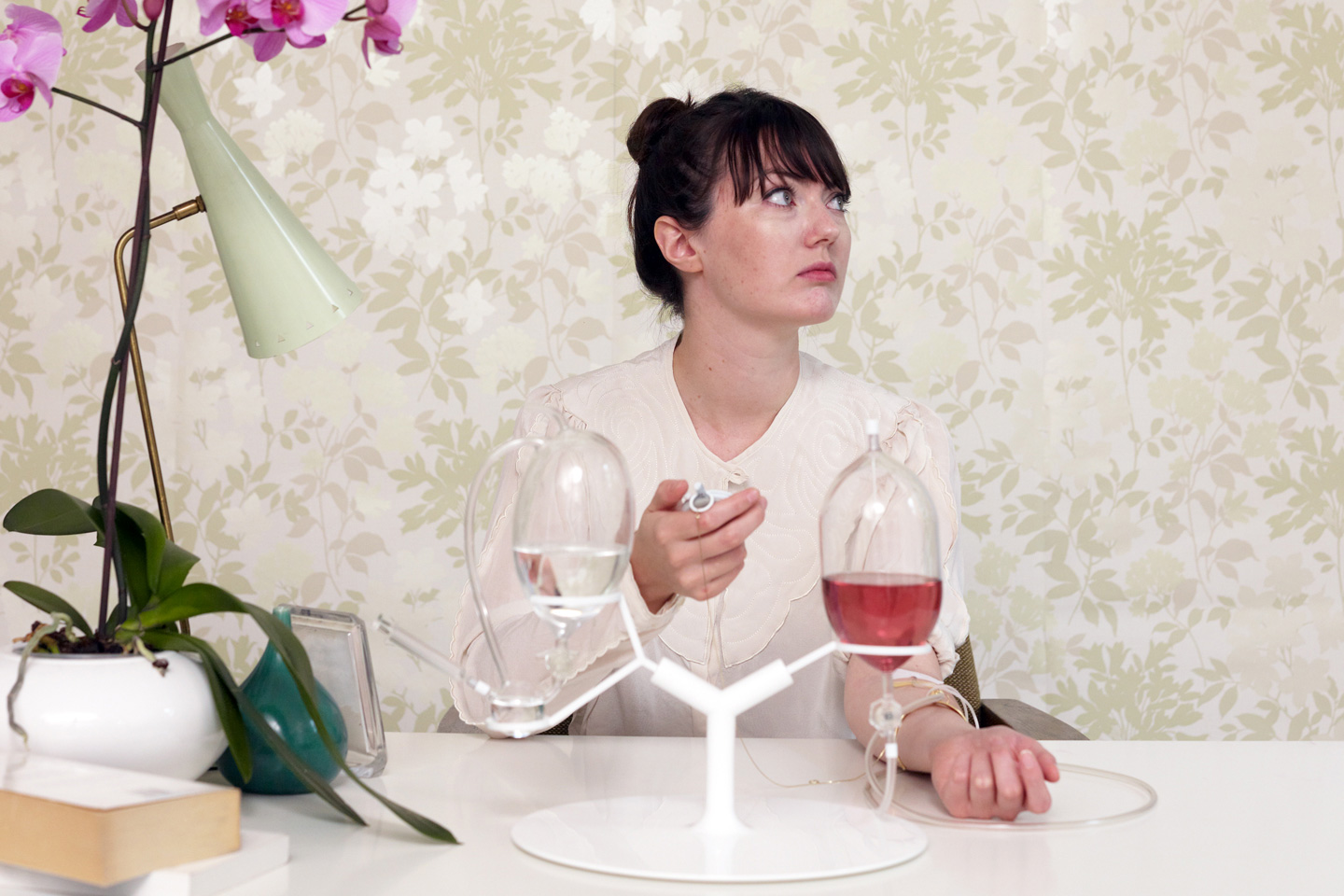With the increased availability of genetic information, the view of our body and identity as a sequence of genes is becoming prevalent. This perception of ourselves has the power to reconstruct our familial relationships and challenge our conception of responsibility, risk and autonomy.
Gold and silver, much like a number of genetic cancers, are traditionally passed down the generations as inheritance. The emerging use of precious metals in medicine and especially in cancer treatment draws parallels between material heirloom and genetic ancestry.
This series of speculative heirloom objects is based on the medical applications of nanogold particles and responds to the new moral codes of genetic responsibility. Each object address a certain issue within this context; focusing on the emotional and psychological implications of genetic knowledge.
How does the comprehension of genetic vulnerability change our behaviour? Can new materials have an effect on our morals and social structures?
DISCLOSURE CASE
Disclosure is one of the key themes within the debate surrounding the ethics of genetic knowledge. Concerned about depriving their child from the right not to know, a parent may use this object to provide genetic information according to their childʼs wishes.
The Pandora inspired box passes this right onto the child. Should they choose to open it, they will find an audio message from the parents alongside the family gold, automatically being chemically dissolved into chloride to create the first stage of nano-gold treatment.
THE INTERVENTIONIST HEALER
This object serves the family who views their genetic mutation within a fatalistic, predetermined narrative: They accept the experience of carrying the mutation as part of the family identity, but choose to take a very active approach in trying to eliminate its effect.
The object contains the dissolved family gold within the structure, as well as the equipment needed to measure, mix and administer nanogold-enriched chemotherapy cycles (measuring funnels for TNF, PNG and magnetic vortex mechanism).
The main drip leads to a bespoke needle, designed to be inserted into the navel, highlighting the maternal connection found in the ritual. As the intent of this heirloom is to portray the parent as a responsible individual that is in full control over natural law, the object focuses on measuring, calculating and manipulating the material in a meticulous way.
This object also refers to epigenetic research, which asserts that genes are influenced by the environment as much as by inheritance. Created for the parent who wants to influence the family mutation, it aims to design the surrounding environment to be counter-cancerous.
Attempting to control the genes through the atmosphere, it consists of a structure of vessels, each attached to horns and pumps that will release sound, scent, and spray the room with antibacterial nanosilver particles.
GUILT ADJUSTER
This object is given as heirloom to the child who did not inherit the genetic mutation.
While physically fortunate in avoiding the illness, in effect they are also excluded from a substantial part of the familyʼs narrative.
It has been found that within a family of mutation carriers, non-carrier children often suffer from Survivor’s Guilt, as guilt is a way of demonstrating a familial responsibility through compassion.
This object functions as a placebo for medical turmoil. It presents the user with a cycle: one bulb contains colloidal gold poison, while the other contains the antidote (dimercapol – chelation therapy). The child may connect their wrist to the needle, turn the tap on and take their body through a journey of pain and healing, building a psychological identification with the rest of the family.
A dose of antidote is ready to be injected when needed. This process can be repeated for as many cycles as their level of guilt demands.
// Supported by a Wellcome Trust Arts Award, in association with the Design Interactions Department at the Royal College of Art
// Photographs by Gary Hamill


